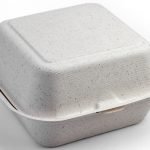It’s not always easy to lead a healthy lifestyle, but many of us try to do our best, especially when it comes to nutrition. Yet sometimes we find out that some of the foods that have been staples of our diets for years may contain something detrimental–and we’re not just talking about a few extra calories here. A new report has determined that literally hundreds of foods available on your supermarket shelves may use a chemical called azodicarbonamide, which is also used in the manufacture of plastics, as an ingredient.
This report, created by the Washington-based Environmental Working Group, discovered that azodicarbonamide, otherwise known as ADA, was present in close to 500 items that were tested in the United States.1 “Hundreds of foods in US contain ‘ADA’ plastics chemical, report finds.” Fox News. 27 February 2014. Accessed 5 March 2014. http://www.foxnews.com/health/2014/02/27/hundreds-foods-in-us-contain-ada-plastics-chemical-report-finds Among the items determined to contain ADA were a vast assortment of items made from flour, such as breads, hamburger and hot dog buns, tortillas, croutons, pizza, and more, including a number of brands of 100 percent whole grain products. This is actually not a surprise since ADA is used in baking to bleach the flour to a lighter color. It also helps to make the dough easier to work with and manipulate, and causes the baked goods to become fluffier.
ADA is approved for use as a food additive by the Food and Drug Administration, as well as the Canadian Food Inspection Agency. According to the FDA, azodicarbonamide is perfectly safe to consume as long as the quantity used is at or below 2.05 grams per 100 pounds of flour, which is the equivalent of 45 parts per million. However, in Australia and several countries in Europe, ADA has been banned for use as an ingredient in anything edible. That’s because, according to the World Health Organization, ADA may be associated with an increased risk of developing asthma and skin and respiratory ailments in those who work closely with this chemical and inhale it or handle it directly. For perspective, keep in mind that the same thing can be said for many ingredients used in food: they are safe unless inhaled or handled directly. Citric acid is an example.2 Citric Acid Material Safety Data Sheet. http://www.nanotech.wisc.edu/CNT_LABS/MSDS/Acids/MSDS%20Citric%20acid%20crystal.htm
Back in the U.S., ADA received approval in 1962 and was even cleared for use in California’s Proposition 65 testing. This initiative established a list of chemical food additives that could be potentially hazardous. Not making the list is a good thing. So in 1991 when a widely used dough additive called potassium bromate made it onto the Prop 65 list, since ADA had already cleared the list and did much the same thing, it became the additive of choice. However, the reality is that although little human testing has been conducted on consuming products with ADA, one of its known byproducts is ethyl carbamate, which has been linked in a number of studies to cancer when ingested orally.3 “Ethyl Carbamate (Urethane).” United States Environmental Protection Agency. January 2000. Accessed 7 March 2014. http://www.epa.gov/ttnatw01/hlthef/ethylcar.html#ref1 Now, keep in mind that there’s no evidence that ADA breaks down into ethyl carbamate when ingested, but also no proof that it doesn’t. Again, there has been little human testing.
A synthetic compound created in 1956 by a company specializing in chemicals, pharmaceuticals, and engineering, ADA is also regularly used in non-food items. Its flexibility provides plastics with better elasticity, making ADA a practical addition to such items as the soles of gym shoes and stretchy yoga mats. This was the headline picked up by most news organizations: “Yoga mat chemical found in bread.” That makes for a great sound bite, but keep in mind, you could say the same thing for hemp, which is now found in clothing, diapers, yoga mats,4 Rawganique http://www.rawganique.com/Hemp-Home-Collection/organic-hemp-yoga-meditation-mats.htm purses, as well as many foods including chips, beverages, protein powders, and food bars.
But now, with the EWG report being published and the Subway fast food sandwich chain stating that it would no longer be including ADA as one of its ingredients, the public has become more aware of the presence of this chemical in so many common foods. The EWG has called for all food manufacturers to stop including ADA in their products. In a perfect world, that might happen. But in reality, the majority of manufacturers will likely just continue their business as usual, aware that this will pass from the public eye as soon as the media jumps on the next story. Is it harmful? As we’ve discussed, the jury is still out. So the real question becomes: why consume it if you don’t have to?
So, assuming the manufacturers keep the status quo of using ADA and the FDA does nothing to ban the chemical from our foods, it is up to us to try to avoid it as much as possible. Since it is used in flour-based items, try to buy your breads and such at local bakeries that don’t mass produce their products–or consider baking your own bread. Avoid the fast food joints and packaged foods that so commonly use this additive. Base the majority of your meals around natural, unprocessed foods. And don’t forget to perform regular detoxing (especially liver detoxing) to remove all of the toxins we are exposed to no matter how healthy a lifestyle we live.
References
| ↑1 | “Hundreds of foods in US contain ‘ADA’ plastics chemical, report finds.” Fox News. 27 February 2014. Accessed 5 March 2014. http://www.foxnews.com/health/2014/02/27/hundreds-foods-in-us-contain-ada-plastics-chemical-report-finds |
|---|---|
| ↑2 | Citric Acid Material Safety Data Sheet. http://www.nanotech.wisc.edu/CNT_LABS/MSDS/Acids/MSDS%20Citric%20acid%20crystal.htm |
| ↑3 | “Ethyl Carbamate (Urethane).” United States Environmental Protection Agency. January 2000. Accessed 7 March 2014. http://www.epa.gov/ttnatw01/hlthef/ethylcar.html#ref1 |
| ↑4 | Rawganique http://www.rawganique.com/Hemp-Home-Collection/organic-hemp-yoga-meditation-mats.htm |











